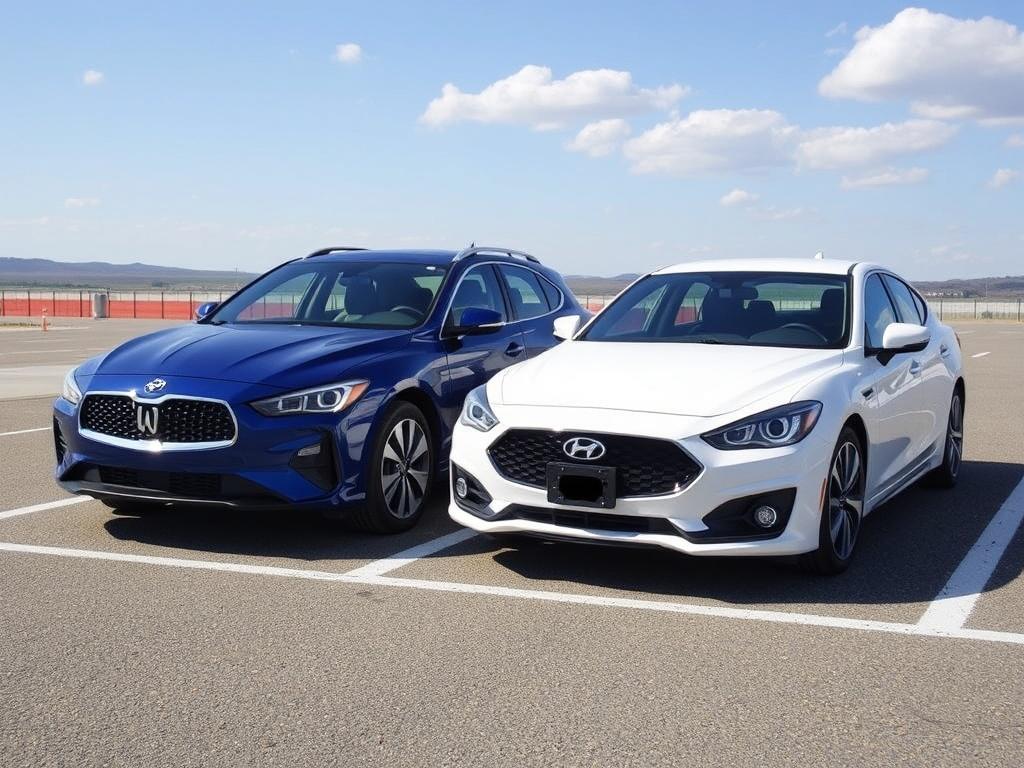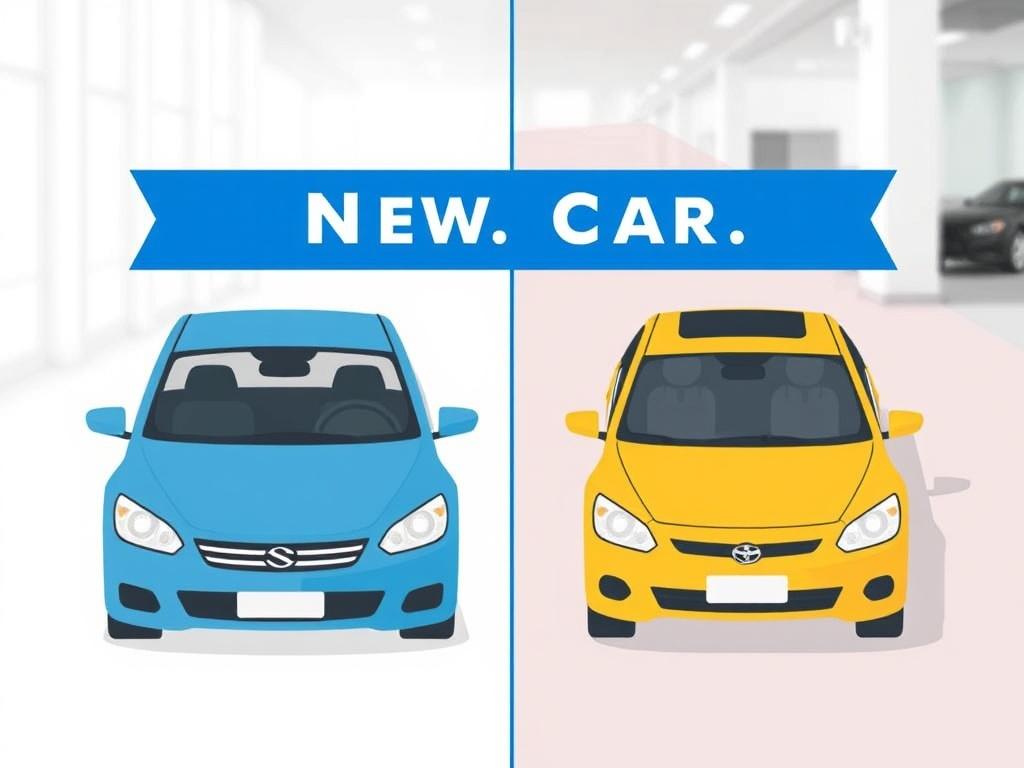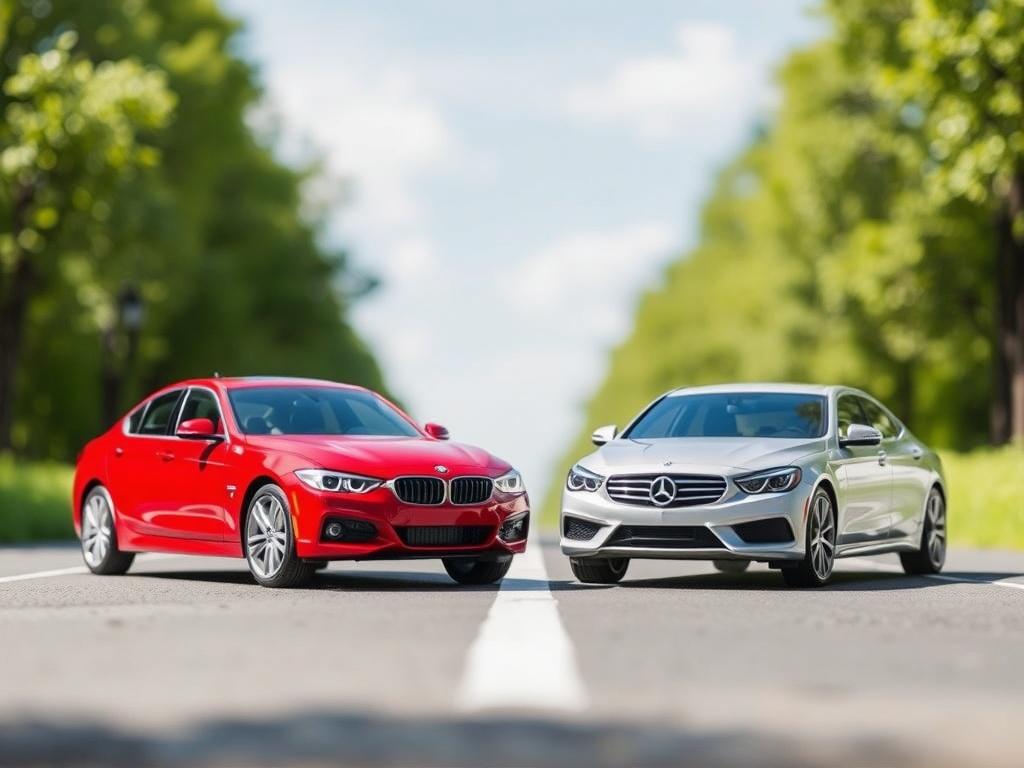SQLITE NOT INSTALLED
When it comes to buying a car, one of the biggest financial decisions you’ll make is whether to buy new or used—and how you plan to finance that purchase. Car loans can make this decision more manageable, but they also add complexity. Should you take out a loan for a new car or opt for a used car loan? Both have their unique advantages and disadvantages, and understanding these can help you decide which path suits your budget, lifestyle, and long-term goals.
In this article, we’ll explore everything you need to know about new car vs. used car loans—from interest rates and loan terms to depreciation and resale value—and help you navigate through the factors that affect your overall financial health when purchasing a vehicle. If you’re wondering which is better, read on to get a comprehensive, easy-to-understand breakdown.
Содержание
Understanding New Car Loans

Financing a new car has become increasingly popular, as many consumers find the allure of driving a brand-new vehicle irresistible. A new car loan is a type of auto loan specifically for vehicles that have never been owned by another person. Often, new car loans come with favorable terms, especially if they are secured through dealership financing or manufacturer promotions.
Advantages of New Car Loans
Buying new means you get the latest technology, safety features, and a full manufacturer warranty that protects you against unexpected repairs. Many new car loans come with lower interest rates because lenders view new cars as less risky collateral compared to used cars. Furthermore, dealerships often provide attractive incentives for new car buyers, such as cash rebates or 0% finance offers, making monthly payments more affordable.
Disadvantages of New Car Loans
Despite these perks, new car loans often come with higher overall costs. New cars depreciate rapidly—some estimates say a new car loses 20-30% of its value within the first year. Since your loan balance can quickly exceed your car’s market value, you might find yourself “upside down” on your loan, owing more than the vehicle is worth. This can cause trouble if you want to sell or trade in your car early. Additionally, larger loan amounts for new cars typically mean higher monthly payments unless you make a substantial down payment.
Understanding Used Car Loans
Opting for a used car can be a savvy financial decision, particularly if you want to minimize depreciation and reduce the size of your loan. Used car loans are designed specifically for pre-owned vehicles and often offer shorter loan terms and different interest rates compared to new car loans.
Advantages of Used Car Loans
The main advantage of a used car loan is affordability. Used cars generally come with a lower sticker price, which means you’ll likely borrow less money, resulting in smaller monthly payments and less interest paid over time. Additionally, used cars have already undergone the steepest phase of depreciation, so their value tends to hold more steadily compared to new cars.
Disadvantages of Used Car Loans
On the downside, used car loans often carry higher interest rates. Financial institutions perceive used cars as higher risk because their condition varies and warranties may be expired. The average loan term for used cars is usually shorter, which can increase the monthly payment. Moreover, used cars may require more maintenance and repair costs over time, which should be factored into your budget.
Comparing Interest Rates: New Car vs. Used Car Loans
Interest rates are a critical factor when deciding between new car loans and used car loans. Generally, new car loans feature lower interest rates thanks to several reasons: new cars are less likely to have mechanical problems, and manufacturers often subsidize financing to boost sales. Used car loans, in contrast, tend to have higher rates due to the increased risk lenders take on.
Let’s look at a simple comparison table showcasing typical interest rates for new vs. used car loans from a range of lenders:
| Loan Type | Average Interest Rate (Annual Percentage Rate) | Typical Loan Term |
|---|---|---|
| New Car Loan | 3% – 6% | 48 – 72 months |
| Used Car Loan | 6% – 10% | 36 – 60 months |
Of course, your personal credit score, lender policies, and the state of the automotive market can influence your actual interest rate.
Loan Terms and Monthly Payments
Loan terms vary widely, but they generally follow the pattern that new car loans are offered for longer durations compared to used car loans. This longer repayment period helps reduce monthly payments; however, it also means you pay more interest over the life of the loan.
If you’re trying to budget your monthly expenses, smaller payments from a used car loan might be appealing, but you might find the terms tighter because of shorter repayment periods. Additionally, some lenders require higher down payments for used car loans, which affects your upfront costs.
Example: Monthly Payment Comparison
Let’s say you are financing a $25,000 vehicle with a 5-year loan. Here’s a rough idea of how your monthly payments might look:
- New Car Loan at 4% interest for 60 months: approximately $460/month
- Used Car Loan at 8% interest for 48 months: approximately $610/month
While the new car loan offers a lower monthly payment, total interest paid over the life of the loan will be higher, and the loan term longer. On the other hand, the used car loan comes with a higher payment, but less interest over a shorter term.
Depreciation and Its Impact on Your Loan
Depreciation is a silent but key part of the new car vs. used car loan conversation. New cars depreciate fastest in the first few years, which means the value of your vehicle can rapidly fall below the amount owed on your loan. This depreciation puts you at risk of owing more than your car is worth, a situation called being “upside down.”
Used cars, having already experienced most of their initial depreciation, tend to hold value better over time, which can be less stressful for borrowers. It can also affect your ability to refinance, sell, or trade in the car while you still owe money.
Depreciation Rates by Vehicle Age
| Vehicle Age | Approximate Depreciation Percentage |
|---|---|
| Brand New (0-1 year) | 20-30% |
| 1-3 years old | 35-50% |
| 3-5 years old | 50-65% |
| 5+ years old | 65-80% |
As seen here, purchasing a car slightly used gives you the best balance between depreciation and loan affordability.
Other Considerations When Choosing Between New and Used Car Loans
Choosing between new and used car loans isn’t just about interest rates and depreciation; several other factors impact your decision.
Warranty and Maintenance Costs
New cars usually come with comprehensive warranties that cover repairs for multiple years or miles, reducing your out-of-pocket expenses. Used cars may no longer be under warranty and might require costly repairs, which can add up quickly—especially on older vehicles. You might want to consider extended warranties or service contracts if buying used.
Insurance Costs
Insurance premiums for new cars are often higher because the vehicles have a higher replacement cost. Used cars tend to have lower insurance rates, although this varies depending on make, model, and location. Before choosing your loan, get insurance quotes for both options to factor them into your total budget.
Flexibility and Customization
A new car gives you the chance to customize your vehicle with specific features and options. Used cars come as-is, and pilfering through the available inventory might limit your choices. If your heart is set on a particular model or package, a new car loan makes more sense.
Credit Score Impact
Lenders assess your creditworthiness before approving any car loan. If you have a strong credit score, you may access better rates on both new and used car loans. If your credit is less than ideal, used car loans might be your best bet because lenders often apply stricter scrutiny for new car loans or subsidized rates. In some cases, however, financially specialized lenders might offer better terms on used car loans targeted for borrowers rebuilding credit.
How to Decide Which Loan Is Better for You

To make an informed decision, consider the following checklist:
- Budget: How much can you afford monthly and upfront?
- Vehicle Needs: Do you need the latest safety and tech features?
- Duration: Do you plan to keep the car long-term or trade it in shortly?
- Risk Tolerance: Are you comfortable with depreciation and possible negative equity?
- Credit Score: What interest rates qualify you for new vs. used loans?
- Maintenance Willingness: Can you handle potential increases in repair costs?
- Dealership Incentives: Are there promotions or deals on new cars that improve affordability?
By answering these questions honestly, you can better align your decision with your financial reality and lifestyle.
Example Decision Matrix
| Factor | New Car Loan | Used Car Loan |
|---|---|---|
| Upfront Cost | High | Low |
| Monthly Payment | Moderate to Low | Moderate to High |
| Interest Rate | Lower | Higher |
| Depreciation Risk | High | Lower |
| Warranty Coverage | Full | Limited or None |
| Maintenance Costs | Low (warranty) | Potentially Higher |
| Customization Options | Available | Limited |
Tips for Getting the Best Car Loan, New or Used
Regardless of whether you’re financing a new or used vehicle, these tips can help you secure the best car loan terms:
- Check Your Credit Score: A higher credit score means better interest rates.
- Shop Around: Compare offers from banks, credit unions, online lenders, and dealerships.
- Get Pre-Approved: Pre-approval can give you bargaining power and a better negotiating edge at the dealer.
- Make a Solid Down Payment: Putting money down reduces your loan balance and lowers monthly payments.
- Keep Loan Terms Reasonable: While longer terms lower payments, they often cost more overall.
- Read All Terms Carefully: Beware of hidden fees, early payoff penalties, and balloon payments.
- Consider Total Cost of Ownership: Factor in insurance, fuel, maintenance, and taxes along with your loan payments.
Common Misconceptions About New and Used Car Loans
It’s easy to get confused by myths surrounding car loans. Here are some clarifications:
- Myth: Used car loans always have higher interest rates.
Fact: Not necessarily. Some used car loans have competitive rates depending on your credit and lender. - Myth: New cars depreciate too fast to justify a loan.
Fact: While depreciation is faster with new cars, many buyers value the warranty, reliability, and peace of mind enough to offset risks. - Myth: You must finance through a dealership.
Fact: You can always finance through banks, credit unions, or online lenders for potentially better terms.
Final Thoughts: Balancing Your Priorities

Whether a new car loan or a used car loan is better depends on your unique financial situation and personal preferences. New cars offer modern features, warranty coverage, and often lower interest rates but come with faster depreciation and higher upfront costs. Used cars offer affordability, reduced depreciation risk, and potentially lower overall ownership costs but may come with higher financing rates and increased maintenance responsibilities.
By carefully considering your budget, loan terms, and vehicle needs and doing thorough research, you can make the decision that suits you best without regrets.
Conclusion
In the battle of new car vs. used car loans, there is no one-size-fits-all answer. Your choice hinges on understanding the advantages and drawbacks linked to interest rates, loan terms, depreciation, and ongoing costs. For some, the excitement and reliability of a new car with a lower-interest loan make perfect sense. For others, the smart savings and lower risk of a used car loan fit better with their financial goals. Whatever option you choose, approach your car loan with informed insight and realistic expectations. A thoughtfully chosen loan can pave the way to driving the right car comfortably within your budget—making the experience both financially sound and enjoyable.
Опубликовано: 23 July 2025 Кредитрон – блог о кредитах, финансах и прочих реверансах
Кредитрон – блог о кредитах, финансах и прочих реверансах

